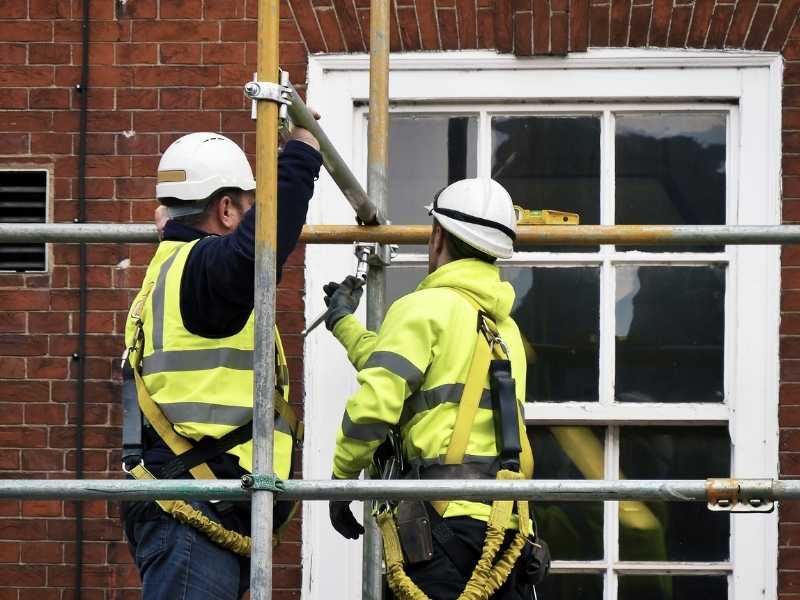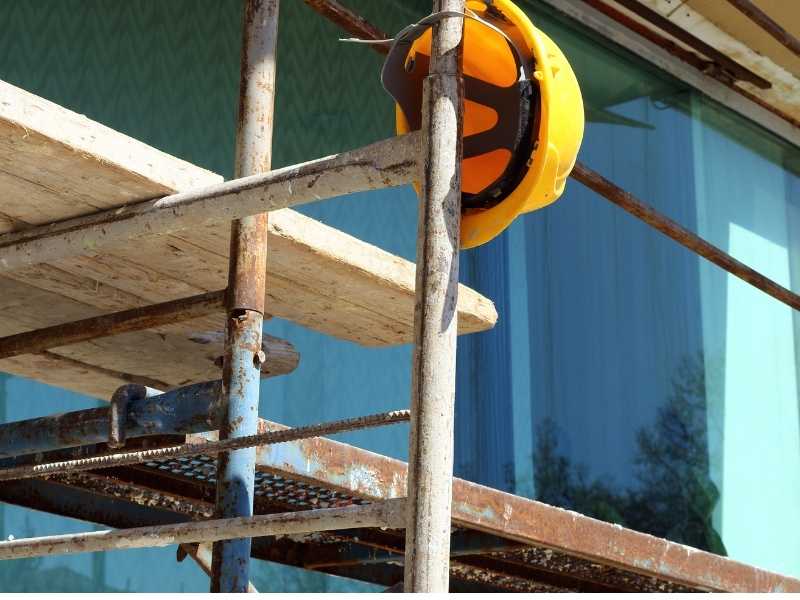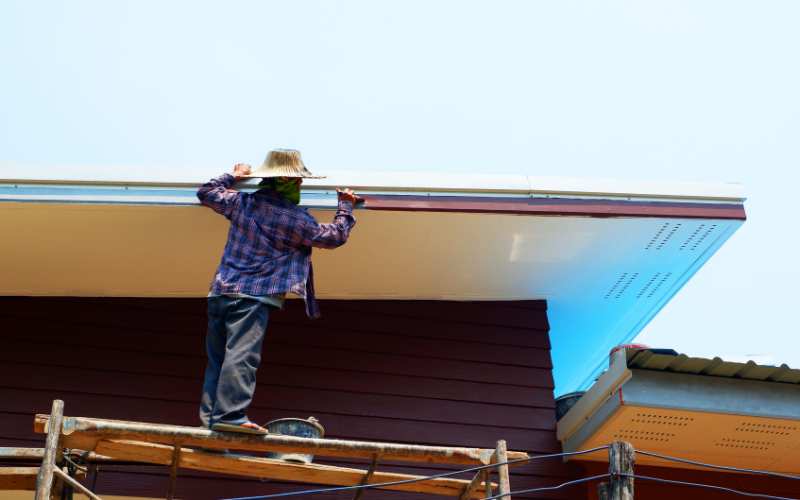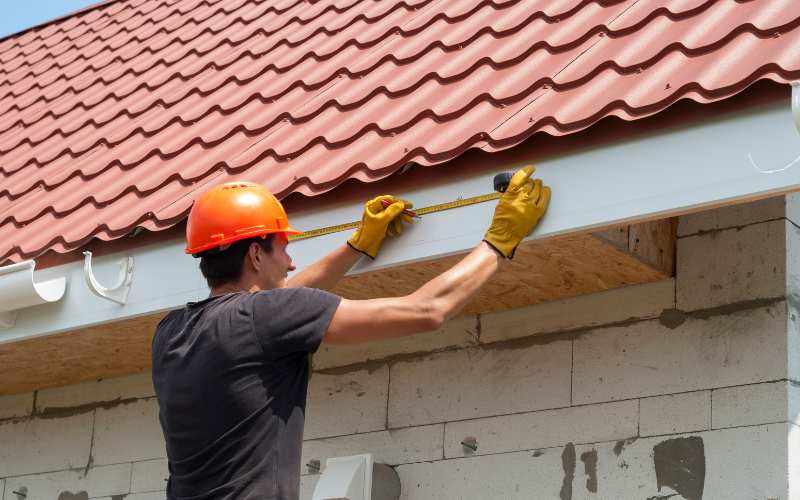Are you looking for a quick fix to your gutter problem? Many people ask this question as they wonder if it will be a quick and easy process. There are some people who get confused about whether they need scaffolding to replace their gutter system or not. The answer is, you don’t need scaffolding to replace guttering in all cases. But there may well be times when your chosen tradesperson or gutter repair contractor recommends that you use temporary support for example, during extensive building work such as gutter replacement and any major gutter repair. In this scenario, you might need to use scaffolding. So let’s find out, do you need scaffolding to replace guttering?

Scaffolding is temporary, movable structures that can be erected and dismantled quickly. They are designed to provide safe access to places that would otherwise be difficult or dangerous to reach. Scaffolders are trained professionals who erect scaffolds according to stringent safety regulations in order to protect workers from injury while they work at heights. You also should look into scaffolding if you need help with any building project including roofing, window installation, painting, guttering cleaning, and more.
You should also use scaffolding if you don’t have sufficient protection around the exterior walls or roofing. Do not attempt any work unless you know what steps need to be taken at each phase, causing more damage than good! In addition, quality tradesmen only ever do the work that is required to give you the best results, so don’t be afraid to ask them what they recommend.
The Benefits of Using Scaffolding to Replace Guttering
Scaffolding has many benefits including time savings and safety for both professionals and homeowners alike. The most important benefit is that you will be able to prevent water from entering the structure of your home, which might cause damage over time.

Scaffolding is the perfect choice for homeowners looking to save time and money on their projects. The process of replacing your gutters when using scaffolding works very well because it allows one person to work from both above and below.
This means that you can save time and money as the job is done in half the usual amount of days. Do not think for a second that scaffolding isn’t required. It enhances safety by preventing falls and injuries!
Can I Build Scaffolding Without a License?
We get asked this question many times, how high can you build a scaffold without doing a license? The answer is that there are regulations for this, but it will depend on the size and requirements of each individual project. Usually, under the height of 4 meters, you do not need a license.
Is It Illegal to Work on a Roof Without Scaffolding?
Without scaffolding, working on a roof can be hazardous and even lethal. Working on a roof without the necessary safety equipment, such as scaffolding or fall protection, is prohibited in many nations. This is due to the fact that falls from rooftops are one of the most common causes of accidents and fatalities in the construction sector.

Depending on the nation or location, working on a roof without scaffolding may or may not be permitted. For instance, the Occupational Safety and Health Administration (OSHA) in the United States mandates that companies offer fall protection to employees working on roofs that are higher than 6 feet from the ground. Guardrails, safety nets, and personal fall arrest devices are a few examples of this protection.
Regardless of the local rules and regulations, it is always advisable to err on the side of caution and offer employees who are working on rooftops proper protection. This will lessen the possibility of a major accident or fatality while also ensuring the safety of the personnel.
How Much Does Scaffolding Cost and How Long Will It Take to Install?
Scaffolding installation prices will vary depending on the size of your job. The larger the structure, obviously the more expensive it is going to be. In general, contractors normally work on jobs ranging from $400.00 up to $1500.00 for scaffolding installation, plus GST.
Scaffolding usually takes 1-2 days to put up, although this will depend on the area you are working in and how many tradespeople there are available to help out. We try our best to get it done as quickly as possible while still providing an excellent, safe job!
Scaffold Safety Guidelines
Here are some guidelines which should be followed in order to scaffold safely. The following criteria must always be met.
- All employees must know how to erect, dismantle and move the scaffolding safely, including operating all lifting appliances used to move the scaffold members
- The design of the scaffold must be appropriate for its use.
- All construction work involving work at height shall comply with national laws(s) where applicable
- Keep vehicles and heavy equipment clear of the worksite
- Scaffolds should only be erected by competent persons after a thorough planning process has taken place. Scaffolds erected without sufficient planning could result in an inappropriate structure being built. This increases the risk of worker injury or even death if something goes wrong during the erection or dismantling of the structure.

When Do I Need Scaffolding?
You need to hire a scaffold if your works are above 2 meters or in any high-risk situation that can cause you danger. We also recommend hiring a scaffold when the structure is very difficult to work on. It allows workers to have all their necessary tools and equipment for work. The safety of the construction worker is extremely important in every job, and that’s why we recommend hiring a scaffold even for small jobs.
When Do I Not Need Scaffolding?
When your job is very easy and simple, you can do it without scaffolding. Instead of buit a scaffold, you could use a ladder to finish your work. In some cases, you could use a step ladder as well.
You do not need scaffolding if you are happy to take the risk of working at heights, have no access to ladders or platforms, think it will be too difficult to work safely at height or your structure is below 2 meters.
Due to the high cost of hiring a scaffold for small jobs, some people continue to work without it and put their safety on the line! We recommend working from a stepladder or even ladders but there is always a risk with this method of work. It is always a wiser choice to hire a scaffold and be safer.
What Types of Scaffolding Are There?
Scaffolding comes in a variety of shapes and sizes and may be used in many applications. There are several types of scaffolding available for use in the construction industry. These are the five most commonly employed scaffold types. Let’s see when each one should be utilized.

Single Scaffolding
Single scaffolding is usually used for brick masonry, brickwork, and stone setting. This type of scaffolding can be used for buildings under construction, roofing repair, or installation jobs. It requires a sturdy frame that is connected to the building with outriggers that are set on footings or piles to bear its weight safely. In general, it is set parallel to the wall and about 1.2 meters from it.
Double Scaffolding
Double scaffolding is very useful for brickwork and stone settings. This scaffold can be used to do both interior and exterior work. The double scaffolds are usually made up of two towers that hold the platform on which workers stand.
It has safety belts attached to it so as to keep them safe from falling down while working at great heights. It is also used as a work platform for painters and workers who paint the exterior of high-rise buildings such as skyscrapers.
Trestle Scaffolding
Trestle scaffolding is similar to double scaffolding but they are not so high. This type of scaffold can be used for such works that require close proximity to the building and should only stand parallel to the wall about half a meter from it.
For example, indoor repairs, painting, and ironwork. This type of scaffold is effective for shorter buildings, usually no more than two or three stories high. It also provides easy access to the upper floors by providing ladders at suitable intervals between platforms.
Kwikstage Scaffolding
Kwikstage is made with hard galvanized steel. The scaffolding is ideal for use on both small, medium, and large construction sites. It works well with concrete structures as it can be balanced on the beams without causing any harm to the surface of the structure.
It can accommodate more workers and materials than trestle scaffolds. It can be used safely at full height with no risk of material or tools falling. Kwikstage scaffolding is also popularly known as the self-erecting stage.
Scaffold Towers
Scaffold towers, sometimes known as patented scaffolding, are constructed of steel and come with special couplings and frames. Construction workers who must operate at heights with their extremely tall scaffold surfaces will benefit from this type of scaffolding.
Scaffold towers are the sturdiest and safest of all scaffolds. They can be used on a wide range of projects, from small to large-scale construction sites.
This type of scaffolding is very versatile as it allows workers access to every part through mobile platforms that travel up and down with ease along frames fixed at each level.
Hire a Professional Contractor
A professional and reliable company will ensure they complete as many details as possible with each request such as: providing an accurate estimate cost, working within deadlines, planning the work required, and managing the site.

